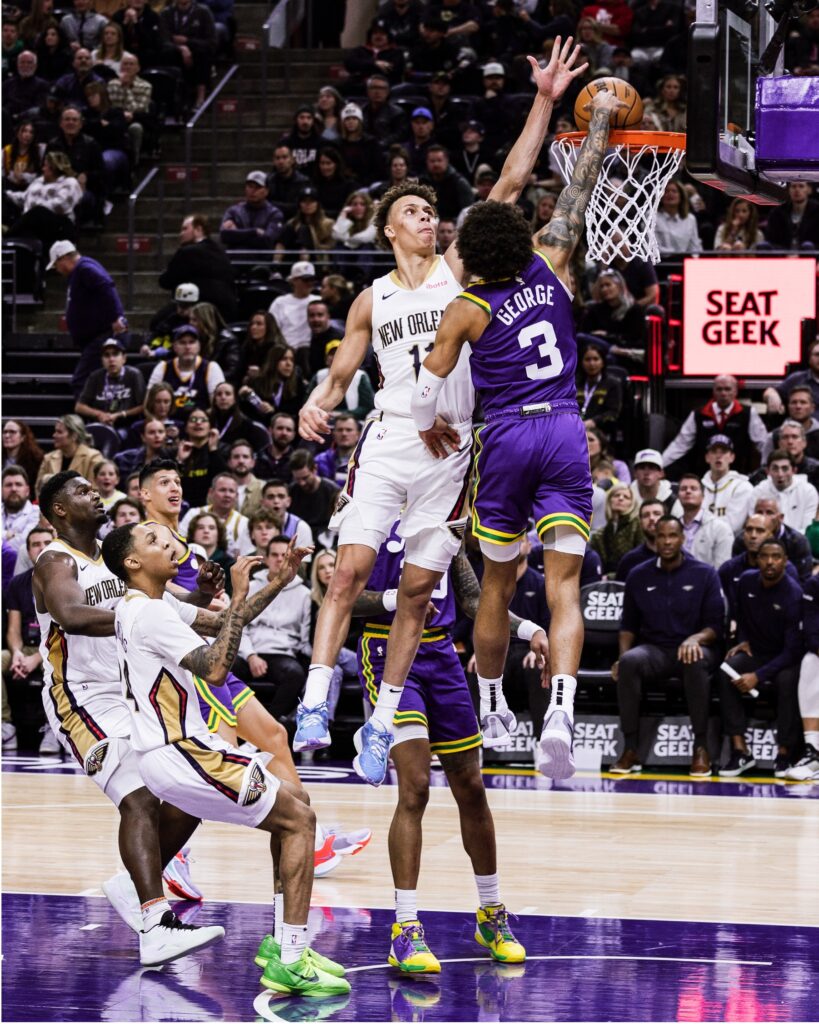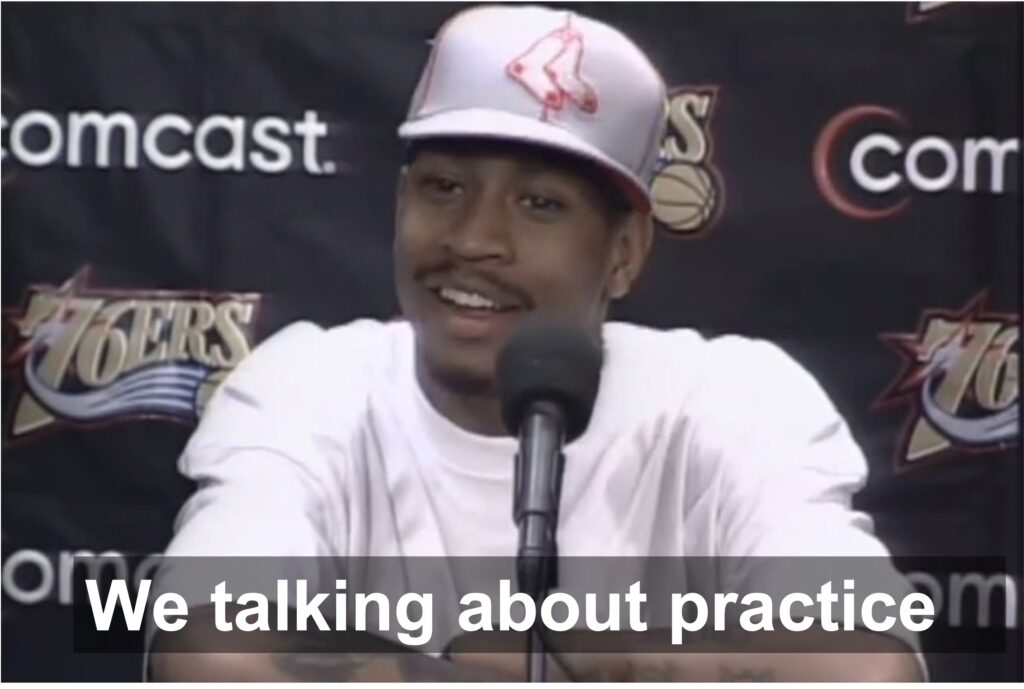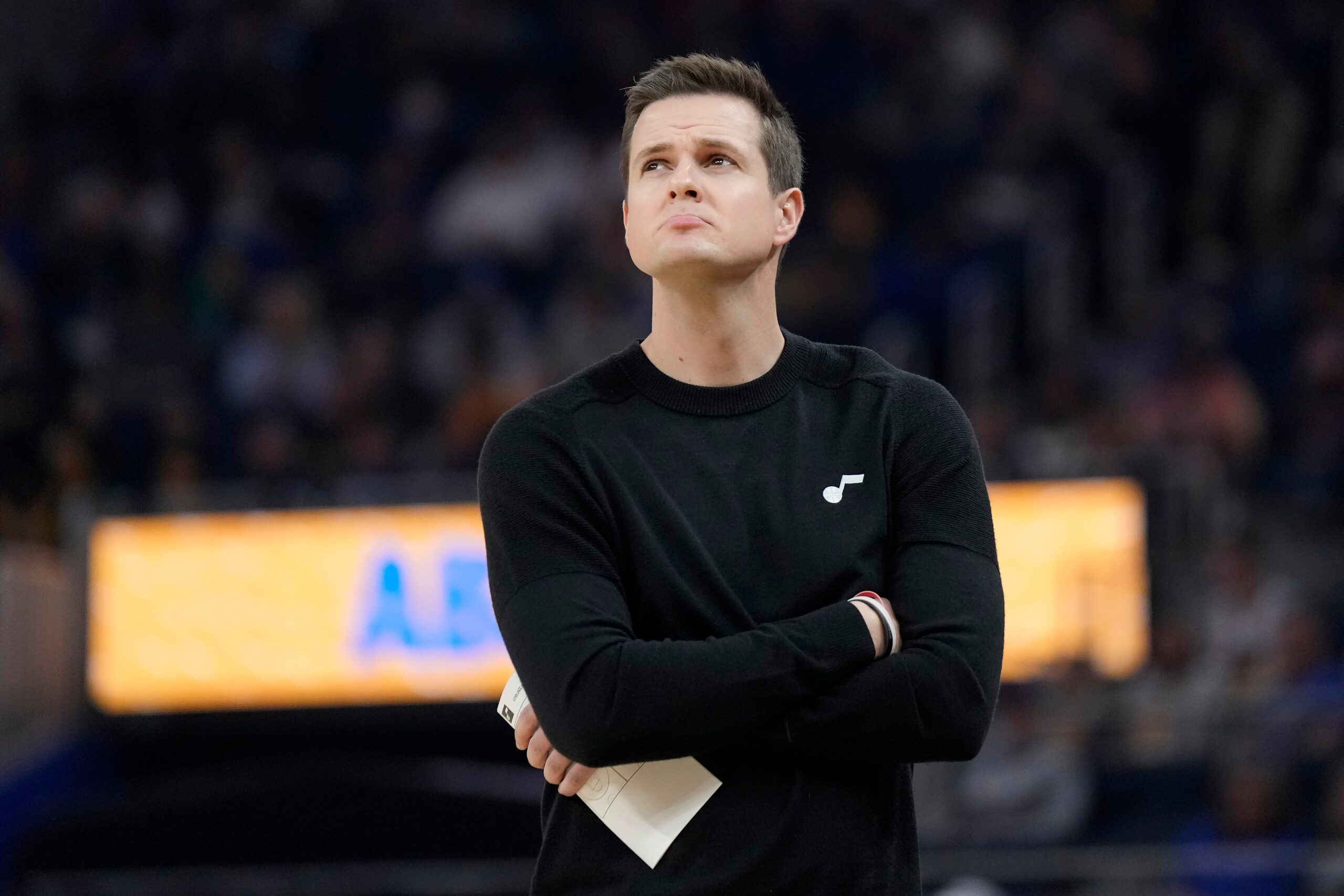We rarely do this here at Lower the Rim. We rarely recommend anything to anybody. How could we possibly provide any insight into a team’s play, or lack thereof, that hasn’t already been divined by experienced and high-paid coaching staffs? The answer is… we couldn’t. So, really… who are we to opine?
Well, we’re red-blooded Americans, that’s who we are. And we can opine if we want to… it’s a free country. Besides, the play of the Utah Jazz through the first weeks of the season has been just so fascinatingly dreadful that it’s hard not to wade in here.
Also… we know we’re always right on these things. So, for the good of the team and all of mankind, here’s a few suggestions to improve the Utah Jazz’ watchability if not its win total.
Tip #1 – Pick up the pace
The Jazz are a bad offensive team in the half court. They commit most of their league-leading number of turnovers per game playing against a set defense. The team struggles with spacing and their half-court action frequently fails to produce any offensive advantage. The Jazz rank 26th in points per play out of the half court. The team is significantly better, however, when they’re on the move—the Jazz rank 13th in scoring in transition per possession.
So, here’s our tip… play less in the half court and more in transition. It’s a simple concept… pick up the pace.

The Jazz have the personnel to push the ball. Certainly Markkanen, Collins, and Kessler have shown that they can get out up and down the court. The team’s guards and wings are also sufficiently athletic to run and up-tempo offense. Transition offense is typically more efficient (higher points per possession) than working from the half court regardless of a team’s makeup. The difference can be more important, however, when working with a talent-deficient crew like the Jazz as changing to a more up-tempo offense can help hide skill and execution weaknesses on the offensive end. The up-tempo style is also a heck of a lot more fun to watch than the half-court, dribble-hand-off thing the Jazz have going now.
The effects of an early offense approach were visible in the back-to-back Jazz’ victories over the Pelicans last week. I’m not sure who leaked this article early to the Jazz’ coaching staff, but they took this tip to heart and noticeably increased their pace. The Jazz clocked about 20% more transition possessions during those games than their season average. Although the first half of the first game of the series was a turnover-laden mess, an up-tempo fourth quarter helped the Jazz win the game. The Jazz were fast-breaking or shooting in transition, or very early in the shot clock, in ten of their 23 fourth quarter possessions in that game. They scored on eight of those possessions and turned the ball over only once. We know, that’s an example not a sample, but it illustrates the concept.
The Jazz looked more fluid in Monday’s second match up against the Pels as they consistently got into their offense and took assisted shots early in the shot clock. Even Keyonte George, who has been easing the team into its half-court offensive sets since taking over as starting point guard, was initiating the offense more quickly and putting more pressure on the defense with earlier passing action.
The Jazz also saw this week what can happen when opponents (even awful teams) make a concerted effort to push the ball. The winless-at-home Grizzlies walloped the Jazz Wednesday night in Memphis by consistently running the ball down the Jazz defense’s throat. The Timberwolves watched that film and did the same thing a day later, out fast-breaking the the Jazz 25 points to 5 in a Minnesota blowout victory.
Win or lose Jazz, push the ball! You’re going to look better, your players will enjoy a more aggressive pace that gets them out in the open, and you may win a few more games along the way.
Tip #2 – Roll with your defensive stud
Maybe it was the injured elbow. Maybe it was the coaching staff’s attempt to accommodate the new players’ games. Or maybe they wanted to maintain spacing, keep the passing lanes open, yada, yada. Who knows why Kessler couldn’t stay on the court more that 20 minutes in the seasons’s first weeks.
But here’s a tip—If you have one of the worst-ranked defenses in the league (and the Jazz do), keeping one of the best rim protectors in the NBA on the bench is not the answer. Play Kessler! Play him 30 minutes-plus a game… lean into the big guy.
Many in the media point to a lack of star players as reason why there should be no surprise over the Jazz’ poor start. We agree with their theory that contending teams need “top-25” and “top 50” talent. But we must point out that Walker Kessler is already one of those talents. Although Kessler does not show up on the subjective player rankings from the top outlets like The Ringer, ESPN, etc.; more-analytical rankings that consider both offense and defensive value and impact on winning or losing show Kessler to already be knocking on the top-50-player door.

A LTR examination of player rankings defined using a composite of 538’s Total RAPTOR score and Wins Above Replacement (WAR) value placed Kessler near the middle of the top 100 players last year. RAPTOR (Robust Algorithm (using) Player Tracking (and) On/Off Ratings) measures the number of points a player contributes to team offense and team defense per 100 possessions, relative to a league-average player. The WAR metrics defines the number of wins a player adds to or subtracts from their team relative to a replacement-level player.
The metrics tell us that Kessler impacts games in a very positive way. Maybe like a top-50 player.
So play the guy. Let his teammates get used to playing with a rim protector. Let them get used to rotating off their player when they are beat on a drive, letting Kessler defend the rim while they rotate to another defensive position.
All of this takes time and practice of course. So, leave your stud on the floor. He’s part of the foundation. Yes, Yurtseven is a nice backup. But he’s not the foundation. You need to play The Sheriff.
Tip #3 – Practice!
In a recent pre-game interview with Craig Bolerjack, answering a question on how a players play in practice affects a coaches decisions on their role in the game, Head Coach Will Hardy explained the team doesn’t do a lot of full speed practicing during the season.
Here’s our tip–It might be time to start.

True, there is not a lot of time during the season for such workouts. But right now you wouldn’t call the Jazz a well-prepared team or a well-coached team. The players often look lost out there, on both ends of the court, especially when they are flaying away with new and unusual lineups. They have trouble setting legal screens. They’ve forgotten that they shouldn’t pick up their dribble, that you shouldn’t jump to pass. Didn’t we learn these things on Jr. High? They are frequently out of position in their league-bottom defense. These guys need work… lots of it. Find the time.
And in summary…
This season has an entirely different feel than the last. The 22-23 Conley-led squad had enough talent, experience, and gumption to be competitive on most nights. That team went away when Conley and other key rotation players were shipped off in exchange for a Lakers’ 1st-round pick before the 2023 trade dead line and that was that.
This new team looks like they have less fight and desire in them… they look less motivated. And that flaw may be impervious to any line-up or strategy change.
It just may be that nothing will help, and maybe that’s okay. Jazz management may be fine with the mess we watch on the court every other game. This isn’t the team the Jazz are carrying forward in their projected arc to success anyway. The Jazz may just play this thing out, trim more mediocre talent of the roster (make it the back court, please!) at the deadline, collect their top-10 protected draft pick back from Oklahoma, and move on to next season.
Until then though, why not try these super and simple LTR tips. Right now the Jazz are nigh unwatchable, so what is there to lose. Might as well make the sinking ship look a little prettier as it dips into the abyss.
